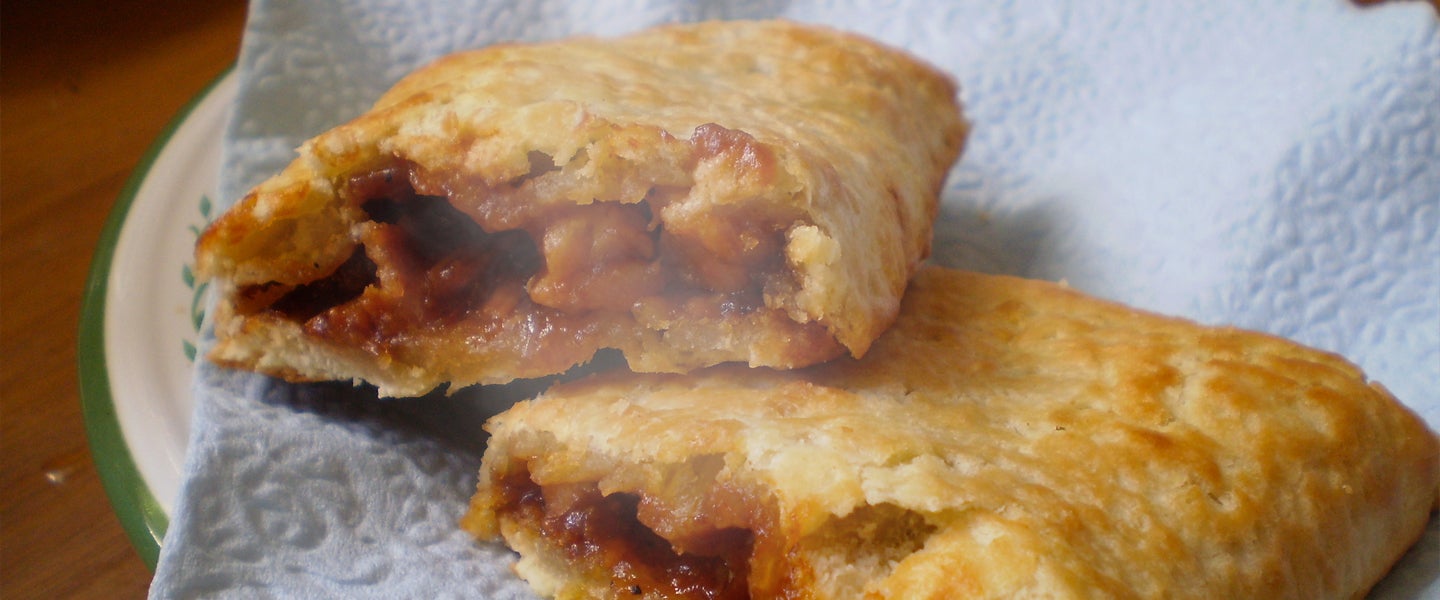Hot Pockets are notorious for many reasons, but perhaps most notably because eating one requires that you incinerate every single one of your innocent taste buds in the process. Somehow, after several minutes in a microwave, the insides of Hot Pockets are able to reach and maintain temperatures that are far beyond manageable for the human mouth — temperatures that have inspired many creative cooling tactics, ranging from chucking your just-heated Hot Pocket into the freezer to, as one redditor suggested, delicately nibbling the ends to “expose the molten filling,” then blowing until the innards are “no longer steaming like a fucking volcano.”
While I applaud the inventiveness of these methods — and appreciate that they may work to some degree — for the sake of mouths everywhere, I hold out hope for a better way (especially considering that, if you’re making a Hot Pocket, you’re probably too damn drunk, stoned, tired or desperate to wait for it to cool down). But in order to get there, we need to examine why Hot Pockets are so hot in the first place.
“A running microwave chamber is full of electric and magnetic fields that are oscillating at a specific frequency,” explains Alex Klotz, an assistant professor in the department of physics and astronomy at California State University, Long Beach. “That frequency is one that water molecules vibrate at, and since food contains a lot of water, the water molecules in the food absorb the energy from the electromagnetic fields and start vibrating more strongly, which increases the overall temperature of the food (one way to think of temperature is that it’s related to the average speed of all the molecules in a thing). A Hot Pocket has a moist interior and a dry exterior, so the part with more water tends to heat up more, and you end up with the boiling-hot filling and the relatively cool shell.”
Because those interior molecules absorb so much energy, it also takes them a lot longer to release that energy, which means the temperature of the molten interior far outlasts the temperature of the warm exterior. “The bread-y outside likely has a lower specific heat capacity than the inside, so it heats up easily, but also releases that heat easily,” says Purdue University sensory researcher Cordelia Running. “The inside likely has a higher specific heat capacity, so it takes more energy to make it feel hot, but it will feel hot for longer, too, because it took a lot more energy to get it to that temperature.”
This is also why, if you only microwave your Hot Pocket for a short period of time, you end up with a frozen interior and a warm exterior.
Now the question is, how does one go about releasing that pent-up heat? Because that moist interior holds heat so effectively, Klotz says, “You can use some kind of heat sink made of a material that transfers heat quickly, like metal. A metal rod that’s narrow at one end and broadened on the other could stab into the center of the Hot Pocket, have heat transfer up the length of the rod, then the broad part could transfer heat to the air so that it keeps drawing up heat from the interior.”
Basically, you want to expose the volcanic insides, ideally through something that transfers heat quickly, to the cooler outside air, where that heat can dissipate. “Heat gradually transfers from hot to cold as the faster atoms collide with the slower ones and transfer some of their energy — in this case, going from the inside of the Hot Pocket to the outside,” Klotz explains.
While scientifically promising, Klotz adds, “How well this would actually work, I don’t know. This must also be done without causing the thing to splurt everywhere as soon as it’s punctured.”
Indeed, the only thing worse than chomping down on a sizzling Hot Pocket is having one explode all over your body.
With caution, then, next time you decide to heat up a Hot Pocket, make sure to carefully impale it with your designated Hot Pocket stabber while letting it cool down. After that, maybe chuck it in the freezer, too — y’know, for good measure.

